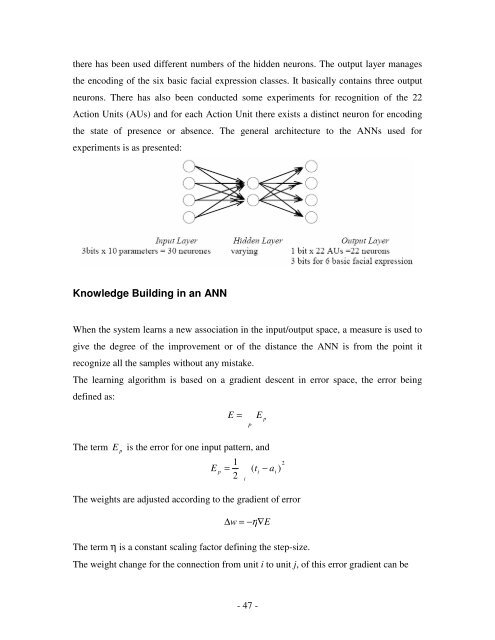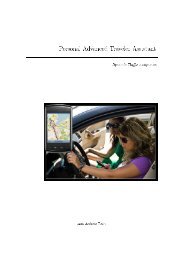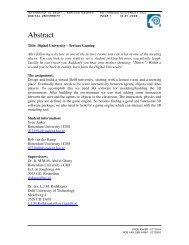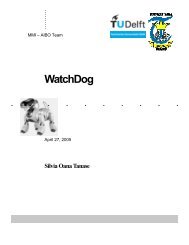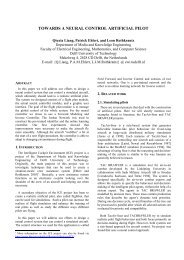Recognition of facial expressions - Knowledge Based Systems ...
Recognition of facial expressions - Knowledge Based Systems ...
Recognition of facial expressions - Knowledge Based Systems ...
You also want an ePaper? Increase the reach of your titles
YUMPU automatically turns print PDFs into web optimized ePapers that Google loves.
there has been used different numbers <strong>of</strong> the hidden neurons. The output layer manages<br />
the encoding <strong>of</strong> the six basic <strong>facial</strong> expression classes. It basically contains three output<br />
neurons. There has also been conducted some experiments for recognition <strong>of</strong> the 22<br />
Action Units (AUs) and for each Action Unit there exists a distinct neuron for encoding<br />
the state <strong>of</strong> presence or absence. The general architecture to the ANNs used for<br />
experiments is as presented:<br />
<strong>Knowledge</strong> Building in an ANN<br />
When the system learns a new association in the input/output space, a measure is used to<br />
give the degree <strong>of</strong> the improvement or <strong>of</strong> the distance the ANN is from the point it<br />
recognize all the samples without any mistake.<br />
The learning algorithm is based on a gradient descent in error space, the error being<br />
defined as:<br />
The term<br />
E =<br />
P<br />
E p<br />
E<br />
p<br />
is the error for one input pattern, and<br />
1<br />
E<br />
p<br />
= ( ti<br />
− a<br />
2<br />
The weights are adjusted according to the gradient <strong>of</strong> error<br />
i<br />
∆w = −η<br />
∇E<br />
The term η is a constant scaling factor defining the step-size.<br />
The weight change for the connection from unit i to unit j, <strong>of</strong> this error gradient can be<br />
i<br />
)<br />
2<br />
- 47 -


